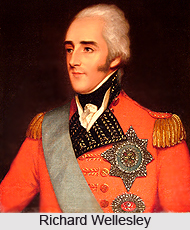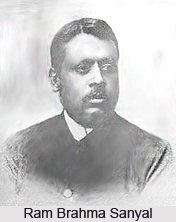 History of Alipore Zoological Gardens, located in Kolkata in West Bengal, can be traced back to the time of British India. Back then a private menagerie was established by Richard Wellesley, the then Governor General of India, in 1800. It was established as a part of the Indian Natural History Project in his summer home at Barrackpore, situated near Kolkata. Francis Buchanan-Hamilton, the famed Scottish physician zoologist, served as the first superintendent of the menagerie. Wellesley and Buchanan-Hamilton, in 1805, returned to England after the recall of Governor-General by the Court of Directors in London. During this era the collection of the menagerie were documented by watercolours by Charles D"Oyly. It was also accompanied by the famous French botanist Victor Jacquemont. In the year 1810, the menagerie was visited by Sir Stamford Raffles who took inspiration from it for the London Zoo.
History of Alipore Zoological Gardens, located in Kolkata in West Bengal, can be traced back to the time of British India. Back then a private menagerie was established by Richard Wellesley, the then Governor General of India, in 1800. It was established as a part of the Indian Natural History Project in his summer home at Barrackpore, situated near Kolkata. Francis Buchanan-Hamilton, the famed Scottish physician zoologist, served as the first superintendent of the menagerie. Wellesley and Buchanan-Hamilton, in 1805, returned to England after the recall of Governor-General by the Court of Directors in London. During this era the collection of the menagerie were documented by watercolours by Charles D"Oyly. It was also accompanied by the famous French botanist Victor Jacquemont. In the year 1810, the menagerie was visited by Sir Stamford Raffles who took inspiration from it for the London Zoo.
Conception of Alipore Zoological Gardens
During that era, there started the foundation of zoos in major cities all over the world which also inspired the British community in Kolkata to upgrade the menagerie to a formal zoological garden. Formal proposal for the establishment of a zoo in Kolkata was put forward by the Lieutenant-Governor Sir Richard Temple in 1873. Thus allotment of land for the zoo was done by the government based on the joint petition of the Agri-Horticultural Society and the Asiatic Society.
 Establishment of Alipore Zoological Gardens
Establishment of Alipore Zoological Gardens
This led to the formal opening of the zoo in a posh Kolkata suburb called Alipore which was inaugurated by Edward VII, then Prince of Wales, on 1st January 1876. Initially gifts were accepted from the general public and the collection of animals during that time comprised Hog Deer, Spotted Deer, Sambar Deer, Indian Gazelle, Indian Antelope, Hybrid Kashmiri Goat, Four-horned Sheep, Domestic Sheep, Zanzibar Ram and African Buffalo. The existence of the Aldabra Giant Tortoise Adwaita among the opening stock of animals is not clear. In the first few months of 1886 the animals from Barrackpore Park were also added to the collection. However over years, the collection increased and the zoo was made open to public on 6th May 1876.
Development of Alipore Zoological Gardens
The growth of Alipore Zoological Gardens took place with the gifts from British and Indian personalities like Raja Suryakanta Acharya of Mymensingh. In fact the open air tiger enclosure has also been named after him as the Mymensingh Enclosure. Many other contributors donated all or a part of their private menagerie to Alipore Zoo including Maharaja of Mysore Krishna Raja Wadiyar IV.
Initial Administration of Alipore Zoological Gardens
Initially Alipore Zoological Gardens was under the administration of an honorary managing committee which included the famous botanist George King and Schwendler. Ram Brahma Sanyal was the first Indian superintendent of the zoo who contributed much for improving the standard of the zoo by achieving good captive breeding success in an epoch when such initiatives were very rare. In 1889 the live birth of the rare Sumatran Rhinoceros was a glaring example of such initiative. In the 19th century, Alipore Zoological Gardens was one of the pioneers of captive animal keeping. In spite of belonging to such primitive era, the zoo had high scientific standards.



















